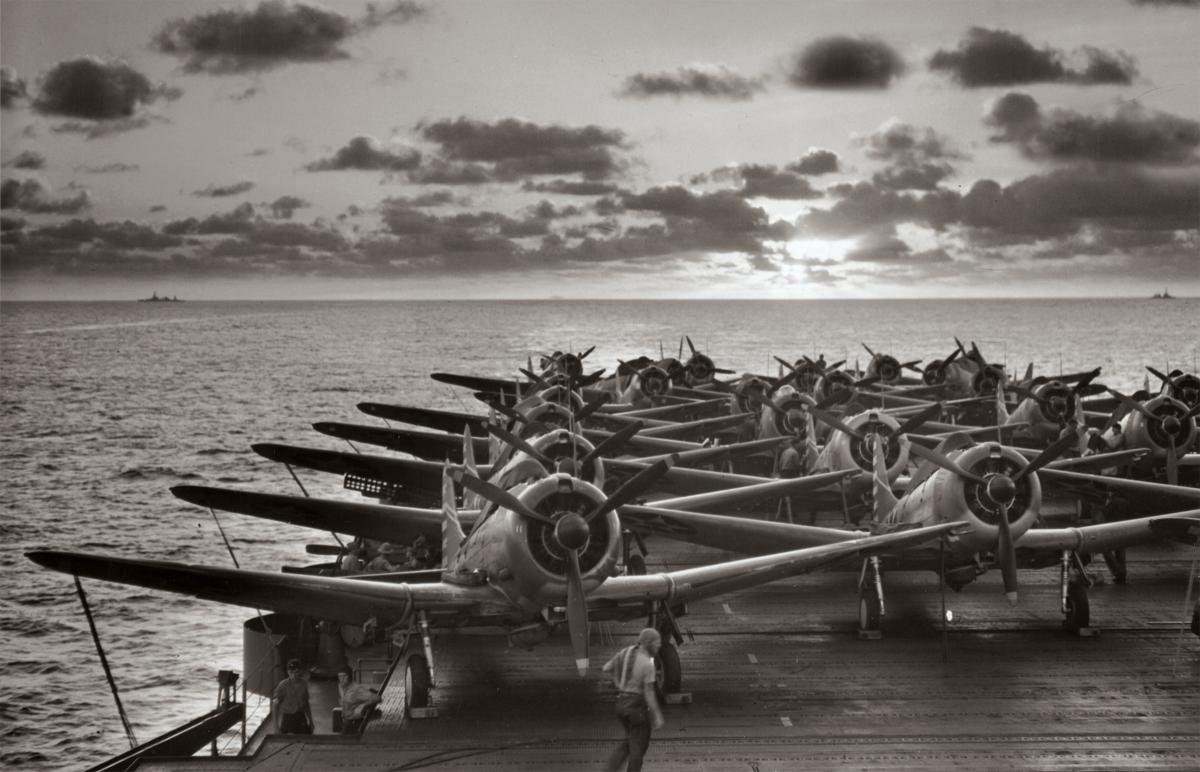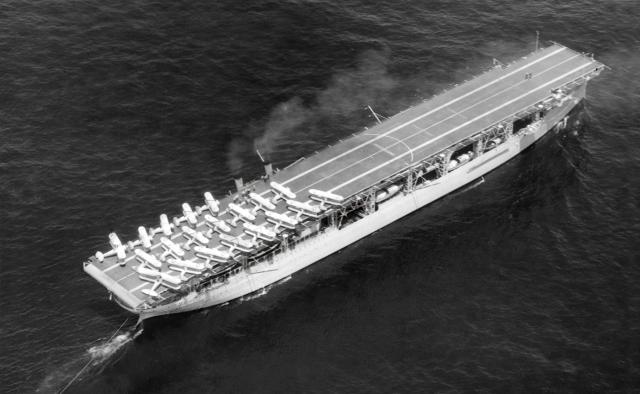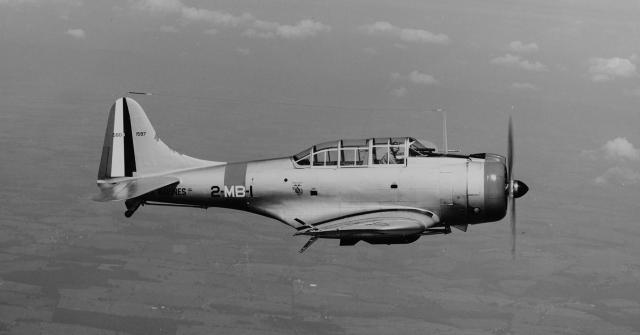Unmanned systems have changed war on and over land. Intelligence, surveillance, reconnaissance, targeting, attack, and logistics all have benefited from unmanned systems use on the battlefields of the Middle East. Drone warfare has become standard operating procedure for U.S. armed forces. But unmanned systems have had a comparatively lesser impact in the maritime domain. In the same post–9/11 interval, the Navy still considers unmanned systems primarily experimental and not a crucial warfighting element. However, the Navy has reached the point where a sufficient number of unmanned systems and new ship classes have been delivered to begin developing tactical and operational doctrine for these systems.
Many have compared the development of unmanned systems with that of carrier aviation. The comparison is apt. The story the Navy needs to tell begins with the hard work and methods of Admiral Joseph Mason “Bull” Reeves: bringing together people and machines in tactical incubators, developing close relationships between industry and operators, and using high-velocity learning to continually reorganize the fleet for exceptional outcomes.1
The Rise of Admiral ‘Bull’ Reeves
In 1925, Joseph Reeves, 52, had been a captain for more than seven years and skippered three battleships—the most coveted commands in the Navy. When most officers looked toward a major command to keep on the path toward flag rank, Reeves sought aviation duty. At the time, aviation commands were still a backwater for the Navy. Only one aviator, Henry Mustin, had risen to the rank of captain.2 The odds of Captain Reeves rising to flag rank with this assignment were bleak.
Considered an exceptionally competent and intelligent officer by his superiors throughout his career, Reeves brought his tenacity to the fledgling position of Commander, Aircraft Squadrons, Battle Fleet. The move to aviation seemed to have been building for a number of years and culminated during his tenure as head of the Tactics Department at the Naval War College, where he began to theorize on how aviation might extend the range and improve accuracy in naval gunfire started by Lieutenant Commander (later Admiral) William Sims. Rear Admiral William Moffett, then the Chief of the Bureau of Aeronautics and a close friend and mentor of Reeves’, green-lighted his move to aviation and gave him the chance to put his theories into practice. The next few years would be seminal for naval aviation and carrier warfare and would provide a blueprint to rapidly develop U.S. forces and capabilities.
Tactical Incubators
After qualifying as a naval aviation observer, Reeves reported to the Mare Island naval base to take command of the USS Langley (CV-1), the Navy’s first aircraft carrier, in October 1925. Converted from the collier USS Jupiter (AC-3), one of Reeves’ previous commands, the Langley had been in service for several years. Her new captain set to work with his air wing, then stationed on North Island, California. He silently assessed his officers and their flying skills for a few weeks before making his move. After he had seen enough, Captain Reeves grabbed the “bull” by the horns and shocked his officers: “First of all, from what I have seen, this command lacks a coordinated set of tactics and has no conception of the capabilities and limitations of the air force.”3
What followed became known as “Reeves’ Thousand and One Questions,” which was widely reprinted for use in his squadrons and guided tactical development for the next year and a half. The questions cut to the core of his opening statement and the challenges the aviators and crew of the Langley would need to overcome in the development of carrier warfare:
• How should fighters attack other aircraft?
• What formations are best for aerial spotting?
• How do aircraft make a successful torpedo attack?
• What constitutes an effective scouting screen?4
Over the coming months, Reeves relentlessly drilled both the aviators and the crew of the Langley. Finally at sea, Reeves was stunned to learn that the Langley had never put more than six of her eight airplanes aloft. Over the protests of his officers, he ordered the addition of six airplanes to the ship’s complement. The aviators cried that it could not be done.5 But this was not just a frivolous order; Reeves understood from his time in the Tactics Department at the Naval War College that aircraft carriers were quite vulnerable to air attack. To rapidly sortie aircraft was fundamental for defense. The Langley’s crew and pilots rose to the challenge, putting ten planes aloft in a quick minute and a half. A month later they would halve that time.6
After Fleet Problem VI in February 1926, in which Reeves, his upstart aviators, and the Langley participated, the captain requested that all air squadrons under his command be transferred to North Island for summer training. Up to this point, Reeves had worked only with the air wing assigned to the Langley. The time had come to assemble his entire command for what would later be known as the “concentration period.”7
Fulfilling Reeves’ admonishment that “we must become a school before we can become an air force,” aviators from throughout the battle fleet would receive instruction, and tactics would be developed for the large-scale use of aircraft in combat.8 During the first period that summer, Reeves’ aviators graduated from individual airmanship to developing squadron-level tactics. In the remote areas east of San Diego, they figured out how to strafe and conduct high-altitude dive-bombing attacks. It took a lot of experimentation to optimize the tactics.
Reeves, rarely found in the cockpit now, empowered his squadron commanders to figure things out. The Langley’s leaders went to work. Under Commander John H. Towers, then the executive officer; Commander Marc Mitscher, the air wing commander; and Lieutenant Commander Frank Wagner and Lieutenant Gerald Bogan, two of the squadron commanders, the air wing spent the summer perfecting tactics and putting new types of aircraft through their paces in competitions to find their limits. The officers’ freedom to innovate would pay dividends in the next war: Towers, Mitscher, and Bogan, steeped in a culture of tactical and technological experimentation, all would rise to flag rank and high command during World War II.9
During these years, Reeves and his fellow aviators demonstrated the essential ingredients for tactical development of both sailors and systems. The long-term partnership between the air wing and the Langley allowed both sides to develop the processes and experience to fully develop carrier aviation.
Today, unmanned systems deploy as detachments, depriving both system operators and host crews from building that relationship and figuring out how to accelerate their combined capabilities. The growth of naval aviation would have been stunted if the Langley had merely hosted instead of partnering with aviators. They would not have discovered how to increase sortie generation rates, reduce turnaround times, and increase the numbers of embarked aircraft. Reeves challenged sailors and aviators to take the initiative in solving these problems and held them accountable for the results. These lessons can only be learned at sea over long periods of integration between host ship and unmanned squadron crews—detachments will slow progress.
Operators and Industry
While his aviators were innovating daily, Reeves was working directly with the Boeing Company and Curtiss Aeroplane and Motor Company to improve the quality and capabilities of carrier aircraft. He demanded that they be capable of carrying a 500-pound bomb, have improved structural strength to withstand aerial fighting and dive bombing, and have higher performance metrics. He worked closely with Boeing to test new aircraft by embarking them on the Langley straight from the assembly line and giving them a thorough shakedown and evaluation. He sent his officers to Boeing to test new flotation gear. His officers also worked with the Army to figure out how to modify carburetors to allow airplanes to fly inverted—a necessary modification for aerobatic flying. Those sailor alterations would be driven back into the development cycle with industry and appear on future aircraft. Reeves and his officers displayed exceptional initiative and toughness in problem solving. Their efforts represented an early use of human-centered design, where value is delivered directly to the warfighter.
As the relationship with industry grew, Boeing and Curtiss both sent experimental planes to Reeves’ pilots in San Diego for evaluations and feedback. Reeves worked with Admiral Moffett and the Bureau of Aeronautics in 1928 to set aircraft development and production priorities based on his experience and evaluations of the aircraft coming from industry. Reeves was adamant that the Navy needed a fourth type of aircraft on board the carriers that could scout, lay smoke, strafe, and spot for the battle fleet. His insight and vision would result in the Douglas SBD Dauntless scout bomber, which proved to be an exceptional ship-killer in World War II.10 It would take nearly 15 years and countless prototypes to develop and produce the SBD Dauntless and the carrier-based Grumman F4F Wildcat fighter, which was capable of protecting the Dauntless to the target and back.11
Modern acquisition practices, regulations, and laws likely preclude a similar relationship between industry and the warfighter, but the principles of human-centered design and driving sailor feedback and acceptance of systems would radically accelerate delivery solutions for U.S. sailors. The recent decision to establish a Program Executive Officer for Unmanned Systems and Small Combatants (PEO USC) could provide warfighters with a more direct entry point to industry than the current acquisition pathways.12 The Navy should consider empowering ship, squadron, type, and fleet commanders and the new development groups (DEVGRUs) to work directly with PEO USC to more rapidly deliver prototypes to fleet operators for tactical experimentation and combat evaluation. This will not only put capabilities in the hands of warfighters faster, but also help shift fleet culture to one of continual problem solving and critical thinking—skills that will give the United States a strategic advantage over its peer competitors.
Organizing for High-Velocity Outcomes
Their first coat of paint was barely dry before Reeves ordered his two newest carriers into action. The USS Lexington (CV-2) and Saratoga (CV-3) had been in commission for less than six months and were still on initial workups when Reeves ordered them from the East Coast to Hawaii to take part in maneuvers following Fleet Problem VIII in April 1928.13 Reeves desperately wanted to experiment with multicarrier operations and finally had three carriers with which to do it. For several weeks, the aviators and crews on all ships experimented as a carrier division, refining aerial dive bombing and ship-based antiaircraft tactics. The operations likely did more to shakedown the ships, their crews, and the air wing than the initial workup would have done—it was a crucible.14
The famous Fleet Problem IX occurred the following year, in 1929, with the watershed surprise carrier-plane strike from the Saratoga on the Panama Canal. Military historian Albert Nofi reports that there were more than 180 naval aircraft operating on the western side of the Panama Canal during these operations, so many that the Army aviators declined to fly in the area because they could not determine friend from foe.15
The Fleet Problems grew in size, length, and complexity through the 1920s and 1930s, further stretching the development of carrier warfare as the fleet worked out the kinks. As the practices cultivated by Reeves and his aviators became mainstream operating procedures, the fleet continued to experiment with carrier division makeups, fleet logistics issues, including developing and refining the side-by-side replenishment at sea and command, control, and communications tactics and procedures, and controlling ever larger fleet dispositions. The fast carrier strike group did not take its final form until Fleet Problem XIX in 1938, two years after Rear Admiral Reeves had retired. It would prove to be the foundation of the Navy’s success in World War II, particularly in the drive across the central Pacific in 1944–45. Fully developing carrier warfare into its modern form took more than a decade of experimentation, continual fleet reorganization, and active learning.
Admiral Reeves laid the cornerstones for tactical experimentation with the Langley in 1925, and it proved a model that the fleet would continue to follow, championed and expanded under Chief of Naval Operations (CNO) William Pratt in the early 1930s. The later Fleet Problems began to incorporate more input and testing from the output of tabletop wargames at the Naval War College.
Today, the mandate in Design for Maintaining Maritime Superiority, Version 2.0 to establish a DEVGRU East and DEVGRU West to marry research institutions with capability and concept development starts the Navy on the path back to Reeves’ principles. However, the DEVGRUs likely will lack permanently assigned forces and the ability to carry out long-term experimentation the way Reeves did with the Langley and his air wing. The surface force recently announced the establishment of an experimentation squadron (DEVRON), which will include DDG-1000s and a few littoral combat ships, but it needs to go further.16 The Navy should establish an experimental squadron under each DEVGRU and assign them a motley crew of modern misfits: DDG-1000s, littoral combat ships, expeditionary docks, staging bases, fast transports, and the unmanned undersea vehicle squadrons (UUVRON One and Two) and the Unmanned Aerial Vehicle Squadron (UAVRON One)—all the things the Navy is not yet sure what to do with.
In addition, as the fleet size grows, the Navy should consider sending its more standard-looking warships, submarines, and aviation squadrons through the DEVRON following new construction or overhaul for a few years to shake down the crews through experimentation, similar to Reeves’ use of the Saratoga and Lexington in 1928. The training benefit for the ships would be substantial, and the regularity of having forces assigned for several years would allow the DEVGRUs to maintain a steady cadence of at-sea experimentation without harming operational readiness for near-term commitments.
In this construct, the DEVRONs would not be part of the Navy’s force-generation package, which would enable the experimentation to continue uninterrupted short of total war, protecting the Navy’s ability to continue innovating up to the last minute. To ensure the entire fleet receives the benefit of tactical development and experimentation, the DEVRONs could become the opposing force for all future Fleet Problems, thus requiring ready forces to wrestle against a complex adversary in high-end scenarios.17
All new experimental capabilities and unmanned systems should be assigned to the DEVRONs to allow sailors to shakedown the technologies, develop and refine concepts of operations and procedures, and feed their assessments back to PEO USC and the industrial base, much the way Admiral Reeves orchestrated the relationships between industry and the Bureau of Aeronautics. Such alignment would create greater opportunities for high-velocity outcomes and exponential growth of our systems and sailors. They would be modern tactical incubators.
The Strategic Imperative
Admiral Joseph Reeves led by example, and his actions resulted in the development of an entire cadre of aviation leaders who were crucial to U.S. success in World War II and the development of carrier warfare doctrine. His example encourages the Navy to rapidly develop and deploy new systems, even if they are not complete, and pursue close ties with industry. His example shows the steps to foster high-velocity outcomes and the development of operational doctrine with fundamentally new systems. The ability to out-innovate peer competitors in an increasingly uncertain world requires a fundamental structural change to the way the Navy develops capabilities. The Navy should fully align the systems to generate the nonlinear growth and high-velocity outcomes to maintain the United States’ relevance on the world stage. Future U.S. success depends on it.
1. Admiral John Richardson, USN, A Design for Maintaining Maritime Superiority, Version 2.0 (December 2018), www.navy.mil/navydata/people/cno/Richardson/Resource/Design_2.0.pdf.
2. Thomas Wildenberg, All the Factors of Victory: Adm. Joseph Mason Reeves and the Origins of Carrier Airpower (Dulles, VA: Potomac Books, 2003), 120.
3. Wildenberg, All the Factors of Victory, 126.
4. Wildenberg, 125.
5. Wildenberg, 128.
6. Wildenberg, 129.
7. Wildenberg, 136.
8. Wildenberg, 126.
9. Albert Nofi, HM 18: To Train the Fleet for War: The U.S. Navy Fleet Problems, 1923–1940, U.S. Naval War College Digital Commons, Historical Monographs (2010), 314.
10. Wildenberg, All the Factors of Victory, 166–68.
11. Nofi, HM 18: To Train the Fleet for War, 303.
12. “New Name for Navy PEO,” NAVSEA News, 22 March 2018, www.navsea.navy.mil/Media/News/Article/1473447/new-name-for-navy-peo/.
13. Nofi, HM 18: To Train the Fleet for War, 104.
14. Nofi, 105.
15. Nofi, 115.
16. Megan Eckstein, “Navy Stands Up Surface Development Squadron for DDG-1000, Unmanned Experimentation,” USNI News, 22 May 2019, news.usni.org/2019/05/22/navy-stands-up-surface-development-squadron-for-ddg-1000-unmanned-experimentation.
17. ADM Scott H. Swift, USN, “Fleet Problems Offer Opportunities,” U.S. Naval Institute Proceedings 144, no. 3 (March 2018), www.usni.org/magazines/proceedings/2018/march/fleet-problems-offer-opportunities.









